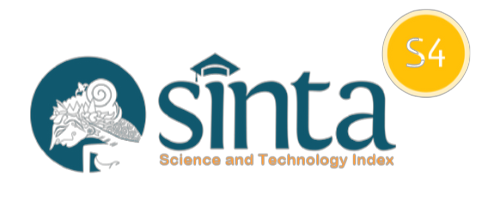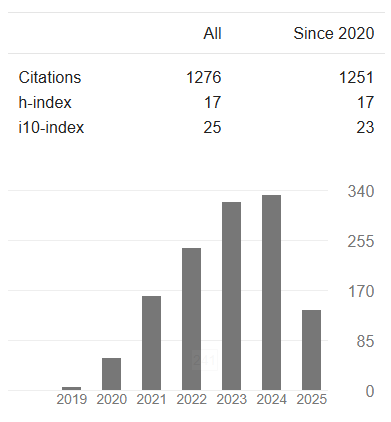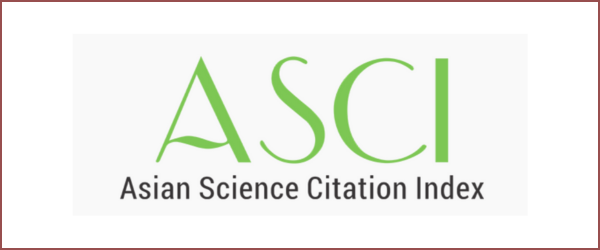Economic Recovery Strategy: The Role of MSMEs Credit Access and Optimization of Regional Fiscal Stimulus in Islamic Economics Framework
DOI:
https://doi.org/10.14421/EkBis.2024.8.2.2334Keywords:
Economic Development, Domestic Credit, Fiscal, MonetaryAbstract
This paper aims to analyze the determinants of economic recovery in North Sumatra using district-based panel data from 2020-2022 using the Random Effect Model. Several variables derived from the implications of fiscal and monetary policies such as MSME credit access, inflation, the effectiveness of income spending, poverty, unemployment rate, and human development index were used to analyze economic recovery as proxied by GRDP per capita. Our findings indicated that the position of MSMEs' credit and relative poverty have a significant positive effect on economic recovery in North Sumatra. Conversely, the unemployment rate and human development index have a significant negative effect on economic recovery in North Sumatra. Inflation and the effectiveness of income spending have an insignificant effect on economic recovery in North Sumatra. These findings recommend that the government and the central bank should support increased access to MSME credit in terms of regulations, the availability of bank financial institutions, and allocations. In addition, it is crucial to maintain the effectiveness and increase indirect budget allocations for social fund posts that can be integrated with Islamic Social Funds such as Zakat, Infaq, and Shadaqah to address poverty and unemployment challenges to improve the community’s quality of life and accelerate economic recovery in North Sumatra.
Downloads
 Abstract viewed: 224 times
|
Abstract viewed: 224 times
|
 PDF downloaded = 162 times
PDF downloaded = 162 times
References
Ademuyiwa. A., & AA Adetunji, (2019). Impact of Some Economic Variables on the Real Gross Domestic Product of Nigeria. Budapest International Research and Critics Institute (BIRCI-Journal): Humanities and Social Sciences, 2 (4), 12–19. https://doi.org/10.33258/birci.v2i4.563
Aderounmu, B., Azuh, D., Onanuga, O., Oluwatomycin, O., Ebenezer, B., & Azuh, A. (2021). Poverty drivers and Nigeria's development: Implications for policy intervention. Cogent Arts and Humanities, 8 (1). https://doi.org/10.1080/23311983.2021.1927495
Agboli, V. (2015). The Effect of Unemployment Rate on the Gross Domestic Product in Nigeria (A Bayesian Approach) By.
Akpan, E. A., Moffat, I. U., & Ekpo, N. B. (2016). Modeling Regression with Time Series Errors of Gross Domestic Product on Government Expenditure. 18 (4), 9324.
Akpansung, A. O., & Babalola, S. J. (2008). Banking Sector Credit and Economic Growth in Nigeria: An Empirical Investigation. 2 (2), 51–62.
Al-Afeef, MAM (2020). the Impact of Small and Medium Enterprises on Gross Domestic Product and Unemployment: Evidence from Jordan 2009-2018. International Journal of Economics and Financial Issues, 10 (2), 181–186. https://doi.org/10.32479/ijefi.9153
Al-Tamimi, KAM (2019). Effect of unemployment rate on the growth rate of gross domestic product of Jordan. Research in World Economy, 10 (3), 217–225. https://doi.org/10.5430/RWE.V10N3P217
Alberto, H., & Peñaloza, B. (2015). Determinants of access to credit for SMEs: America Determinantes del acceso al crédito de las S en Latinoamérica *Determinantes do acesso ao crédito para as PME: Evidência da empresa na América Latina. 34, 247–276.
Alkhateeb, TTY, & ZA Sultan, & HM (2017). Oil Revenue, Public Spending, Gross Domestic Product and Employment in Saudi Arabia. International Journal of Energy Economics and Policy, 7 (6), 27–31. https://doi.org/10.1515/mt-1999-417-807
Anghel, M.-G., Anghelache, C., & Manole, A. (2017). the Effect of Unemployment on. Romanian Statistical Review, 7, 174–186.
Anghelache, C. (2020). Analysis of the quarterly evolution of the Gross Domestic Product. Theoretical and Applied Economics, XXVII (3), 243–260.
Anouze, ALM, & Alamro, AS (2020). Factors influencing intention to use e-banking in Jordan. International Journal of Bank Marketing, 38 (1), 86–112. https://doi.org/10.1108/IJBM-10-2018-0271
Appiah, M., Amoasi, R., & Frowne, D.I. (2019). 1462-1722-1-Pb. 12 (2), 101–109.
Athirah, N., & Doris Padmini Selvatranam. (2015). Gross Domestic Product (GDP) Relationship with Human Development Index (HDI) and Poverty Rate in Malaysia. Perkem Proceedings, 10 (September), 211–217.
Aziz, RNA, & Azmi, A. (2017). Factors Affecting Gross Domestic Product (GDP) Growth in Malaysia. International Journal of Real Estate Studies, 11 (4), 61–67.
Bank Indonesia. (2022). Monetary Policy Review.
Basak, P., Abir, T., Al Mamun, A., Zainol, NR, Khanam, M., Haque, MR, Milton, AH, & Agho, KE (2022). A Global Study on the Correlates of Gross Domestic Product (GDP) and COVID-19 Vaccine Distribution. Vaccines, 10 (2), 1–13. https://doi.org/10.3390/vaccines10020266
Begum, H., Shawkatul Islam Aziz, M., & Author, C. (2019). Impact of Domestic Credit to Private Sector on Gross Domestic Product in Bangladesh. IOSR Journal of Economics and Finance, 10 (1), 45–54. https://doi.org/10.9790/5933-1001014554
Bieth, R.C.E. (2021). The Influence of Gross Domestic Product and Human Development Index on CO2Emissions. IOP Conference Series: Earth and Environmental Science, 1808 (1), 95–108. https://doi.org/10.1088/1742-6596/1808/1/012034
Borio, C. (2021). Monetary and fiscal policies at a crossroads: New Normal or New Path? 1 The starting point: the New Normal. 1–6.
West Nias BPS. (2022). West Nias Regency in Numbers.
BPS. 2024. Pertumbuhan Ekonomi Sumatera Utara Triwulan IV-2023.
BPS North Nias. (2022). North Nias Regency in numbers.
Chepkemoi, K. W. (2014). The Effect of Money Supply on The Gross Domestic Product In Kenya. Technical Paper, October, 42–45.
Cifuentes-Faura, Javier. 2022. “Circular Economy and Sustainability as a Basis for Economic Recovery Post-COVID-19.” Circular Economy and Sustainability 2(1):1–7.
Cruz, J. R. B. Dela, Dequilla, M. C. M., & Pizarro-Uy, A. C. D. (2022). Impact of the Inflation Rate, Gross Domestic Product, and the Unemployment Rate on the Fertility Rate of the Philippines. Journal of Economics, Finance and Accounting Studies, 4 (2), 259–269. https://doi.org/10.32996/jefas.2022.4.2.20
Dahliah, D. & ANN (2021). The Influence of Unemployment, Human Development Index and Gross Domestic Product on Poverty level. Golden Ratio of Social Science and Education, 1808 (1), 95–108. https://doi.org/10.1088/1742-6596/1808/1/012034
Deb, S. (2015). Gap between GDP and HDI: Are the Rich Country Experiences Different from the Poor? IARIW-OECD Special Conference, I.
Dhiniharitsa, N. (2009). Analysis Of the Effectiveness and Efficiency of Spending Budget In The United Nations And Political Agency of Sleman District.
Dudzevičiūtė, G., Šimelytė, A., & Liučvaitienė, A. (2018). Government expenditure and economic growth in the European Union countries. International Journal of Social Economics, 45 (2), 372–386. https://doi.org/10.1108/IJSE-12-2016-0365
Elistia, E., & Syahzuni, BA (2018). The correlation of the Human Development Index (HDI) Towards Economic Growth (Gdp Per Capita) in 10 ASEAN Member Countries. Jhss (Journal of Humanities and Social Studies), 2 (2), 40–46. https://doi.org/10.33751/jhss.v2i2.949
Emecheta, B.E., & RCI (2014). Impact of Bank Credit on Economic Growth in Nigeria: Application of Reduced Vector Autoregressive (VAR) Technique. 12 (2007), 703–712.
Estrada, AAE, & Wenagama, IW (2013). On The Level of Poverty Faculty of Economics and Business, Udayana University (Unud), Bali, Indonesia the term poverty appears when a person or group of people is unable to meet the level of economic prosperity that is considered to be minimum needs. 1637–1665.
Fadilah Nur, & L Setiartiti. (2021). Analysis of Factors Affecting Human Development Index in the City of Binjai. International Journal of Research and Reviews, 8 (4), 161–170. https://doi.org/10.52403/ijrr.20210422
Feriyanto, N., El Aiyubbi, D., & Nurdany, A. (2020). The Impact of Unemployment, Minimum Wage, And Real Gross Regional Domestic Product on Poverty Reduction In Provinces Of Indonesia. Asian Economic and Financial Review, 10 (10), 1088–1099. https://doi.org/10.18488/journal.aefr.2020.1010.1088.1099
Fouladi, M. (2010). The Impact of Government Expenditure on GDP, Employment and Private Investment a CGE Model Approach. The Impact of Government Expenditure on GDP, Employment and Private Investment a CGE Model Approach. Review, Iranian Economic, 15 (27), 53–76.
Gordon, IM, & Nazari, JA (2018). Review of SOX in the business ethics literature. Managerial Auditing Journal, 33 (5), 470–502. https://doi.org/10.1108/MAJ-08-2017-1629
Goshu, F., & Mba, F. (2016). Determinants of Access to Credit and Credit Source Choice by Micro, Small and Medium Enterprises in Nekemte, Ethiopia. 11–27.
Gulcemal, T. (2020). Effect of human development index on GDP for developing countries: a panel data analysis. Pressacademia , 7 (4), 338–345. https://doi.org/10.17261/pressacademia.2020.1307
Hameed, D. I. (2012). Impact of Monetary Policy on Gross Domestic Product (GDP). SSRN Electronic Journal, 1348–1361. https://doi.org/10.2139/ssrn.1857413
Haneef, Mohamed Aslam, and Suherman Rosyidi. 2006. Pemikiran Ekonomi Islam Kontemporer: Analisis Komparatif Terpilih. Airlangga University Press.
Hasan, R., Magsombol, M.R., & Cain, J.S. (2009). Poverty impact of the economic slowdown in developing Asia: Some scenarios. ADB Economics Working Paper Series, 153 (153), 1–14. https://doi.org/10.2139/ssrn.1607540
Herwiyanti, E., & Rafinda, A. (2021). Determinant Factor of Small Medium Enterprises to Access Bank Credit Determinant Factor of Small Medium Enterprises to Access Bank Credit. June. https://doi.org/10.23887/jia.v6i1.29907
Hidayat, I., Aspiani, T., & Alwahidin. (2020). The Effect of Inflation, Interest Rate, And Gross Domestic Products on The Profitability of Sharia Banking in Indonesia (Sharia Banking Financial Reports 2014-2018). Journal of Industrial Engineering & Management Research (Jiemar), 1 (4), 59–66. http://www.jiemar.org
Idris, HJR (2019). The Influence of Construction Costs, Fiscal Independence and Economic Growth on Human Development in West Sumatra. Journal of Economics and Development Studies, 1 (2), 301–308.
Iuga, I., Cioca, I.C., Iuga, I., & Cioca, I.C. (2013). Unemployment Rate and Gross Domestic Product in. 7, 71–78.
Jannsen, N., Potjagailo, G., & Wolters, M. H. (2019). Monetary policy during financial crises: Is the transmission mechanism impaired? International Journal of Central Banking, 15 (4), 81–126.
Karlina, B. (2017). The Influence of Inflation Levels, Consumer Price Index on GDP in Indonesia in 2011-2015. Journal of Economics and Management, 6 (1), 2252–6226.
Khan, Mohsin S., and Abbas Mirakhor. 1989. “The Financial System and Monetary Policy in an Islamic Economy.” Journal of King Abdulaziz University: Islamic Economics 1(1).
Kira, AR (2013). The Factors Affecting Gross Domestic Product (GDP) in Developing Countries: The Case of Tanzania. 5 (4), 148–158.
Le, P. (2018). What Determines the Access to Credit by SMEs? A Case Study in Vietnam. May. https://doi.org/10.5296/jmr.v4i4.1838
Maulid, CL, Rangga, I., & Aryo, Y. (2021). The Effect of Government Expenditure on Economic Growth in Indonesia. 16 (1), 24–38.
Moreira, T.B.S., & Mendonça, M.J. (2021). Fiscal and monetary policy rules in Brazil: empirical evidence of monetary and fiscal dominance. CEPAL Review, 135, 81–103.
Mosikari, T. J. (2013). The effect of unemployment rate on gross domestic product: Case of South Africa. Mediterranean Journal of Social Sciences, 4 (6), 429–434. https://doi.org/10.5901/mjss.2013.v4n6p429
Muin, Muhamad Fathul. 2022. “Recovery of Household Consumption as Accelerator of Economic Recovery in East Java: Empirical Study and Macro Policy Strategies.” East Java Economic Journal 6(1):32–59.
Mwaniki, G. W. (2016). Effect of Public Debt on the Gross Domestic Product in Kenya. Journal of Economics and Finance, 7 (6), 59–72. https://doi.org/10.9790/5933-0706015972
Najmuddin, Z., & Rizkiyani, A. (2022). Government Spending by Function and Economic Growth in North Maluku: IO Table and Panel Data Regression Analysis. Journal of Development Planning: The Indonesian Journal of Development Planning, 6 (1), 64–80. https://doi.org/10.36574/jpp.v6i1.254
Nwabueze, C. J. (2009). The causal relationship between gross domestic product and personal consumption expenditure of Nigeria. Journal of Mathematics and Computer Science Research, 2 (8), 179–183.
Okoroafor, M.O. and N.C. (2013). Poverty and Economic Growth in Nigeria 1990 – 2011. The Macrotheme Review, 2 (4), 144–160.
Pascual, K.C.A., Dionisio, C.P., & Capulla, R. (2020). The relationship of real Gross Domestic Product (GDP), inflation, and unemployment in the Philippines (1970-2011). International Journal of Research Studies in Education, 9 (2). https://doi.org/10.5861/ijrse.2020.5804
Prasetyo, P. Eko. 2020. “The Role of Government Expenditure and Investment for MSME Growth: Empirical Study in Indonesia.” The Journal of Asian Finance, Economics and Business 7(10):471–80.
Putra, AU, Putro, HRV, Budiman, LS, Adlina, L., & Putri, RF (2020). Relation between gross domestic product (GDP) and poverty population in East Kalimantan Province from 2013 - 2017. IOP Conference Series: Earth and Environmental Science, 451 (1). https://doi.org/10.1088/1755-1315/451/1/012108
Putra, Haris Maiza, and Ending Solehudin. 2022. “Fundamentals of Economic and Monetary Policy in Islam.” Al-Falah: Journal of Islamic Economics 7(1):89–104.
Rahmawati, F., & Intan, MN (2020). Government Spending, Gross Domestic Product, Human Development Index (Evidence from East Java Province). KnE Social Sciences, 2020, 774–786. https://doi.org/10.18502/kss.v4i6.6641
Rouksar-Dussoyea, B., Ming-Kang, H., Rajeswari, R., & Yin-Fah, B. C. (2017). Economic Crisis in Europe: Panel Analysis of Inflation, Unemployment and Gross Domestic Product Growth Rates. International Journal of Economics and Finance, 9 (10), 145. https://doi.org/10.5539/ijef.v9n10p145
Schunck, R. (2013). Within and between estimates in random-effects models: Advantages and drawbacks of correlated random effects and hybrid models. In The Stata Journal (Vol. 13, Issue 1).
Semuel, Hatane & Nurina, S. (2015). Analysis of the Effect of Inflation, Interest Rates, and Exchange Rates on Gross Domestic Product (GDP) in Indonesia. Proceedings of the International Conference on Global Business, Economics, Finance and Social Science, February 20–22.
Siallagan, WA (2021). The Role of Fiscal Policy in the Crisis: a Literature Review. CosmoGov, 6 (2), 186. https://doi.org/10.24198/cosmogov.v6i2.29509
Siddiqui, Shamim Ahmad. 2008. “An Evaluation of Research on Monetary Policy and Stability of the Islamic Economic System.” Pp. 235–70 in the 7th International Conference on Islamic Economics (Conference papers). Vol. 235.
Škare, M., & Družeta, R. P. (2016). Poverty and economic growth: a review. Technological and Economic Development of Economy, 22 (1), 156–175. https://doi.org/10.3846/20294913.2015.1125965
Stupak, J.M. (2019). Fiscal Policy: Economic Effects Fiscal Policy: Economic Effects.
Sujianto, AE, & Azmi, MFU (2020). Associative Study on Government Spending, Inflation, Trade Balance, and Gross Domestic Product. Equilibrium: Scientific Journal of Economics, 15 (1), 27. https://doi.org/10.24269/equilibrium.v15i1.2363
Syamsudin, Chaya, Bayu T., & Dewi, SN (2015). The influence of financial performance on economic growth, unemployment and poverty. Competitiveness: Journal of Resource Economics, 17 (1), 15–27.
Syera, IA (2017). The effect of unemployment rate, human development index, gross domestic product on level of poverty in Indonesia. Proceedings of AICS - Social Sciences, 7 (0), 62–68. http://jurnal.unsyiah.ac.id/AICS-Social/article/view/10150
Tahir, Sayyid. 2013. “Fiscal and Monetary Policies in Islamic Economics: Contours of an Institutional Framework.” Islamic Economic Studies 21(2).
Tahir, SH, Shehzadi, I., Ali, I. and Ullah, M. (2015). Impact of Bank Lending on Economic Growth in Pakistan: An Empirical Study of Lending to the Private Sector. American Journal of Industrial and Business Management, 5, 565–576.
Taqi, M., Ali, MS e, Parveen, S., Babar, M., & Khan, I.M. (2021). An analysis of Human Development Index and Economic Growth. A case study of Pakistan. IRASD Journal of Economics, 3 (3), 261–271. https://doi.org/10.52131/joe.2021.0302.0042
Teker, S., & Güner, A. (2016). Development Whether Indices Affect Economic Growth: A Cross-Country Analysis. Procedia Economics and Finance, 38 (16), 340–346. https://doi.org/10.1016/s2212-5671(16)30206-4
Weasly, S. (2015). Institute of Microfinance (InM) Contribution of Microfinance to the Gross Domestic Product (GDP) of Bangladesh Working Paper No. 44 Contribution of Microfinance to the Gross Domestic Product (GDP) of Bangladesh.
Widarjono, A. (2009). Introductory Economics and Its Applications. Econisia.
Wisandani, Iwan, Sri Iswati, and Rifki Ismal. 2017. “The Monetary Policy in Indonesia: In the Perspective of Islamic Economics.” International Journal of Nusantara Islam 5(1):59–74.
Yunanto, M., & Medyawati, H. (2015). Monetary and Fiscal Policy Analysis: Which Is More Effective? Journal of Indonesian Economy and Business, 29 (3), 222–236. https://doi.org/10.22146/jieb.v29i3.6470
Yusoff, Mohammed B. 2006. “Fiscal Policy in an Islamic Economy and the Role of Zakat.” International Journal of Economics, Management and Accounting 14(2).
Zhu, Y., Bashir, S., & Marie, M. (2022). Assessing the Relationship between Poverty and Economic Growth: Can Sustainable Development Goals Be Achieved? Environmental Science and Pollution Research, 29 (19), 27613–27623. https://doi.org/10.1007/s11356-021-18240-5
Zaman, Asad. 2010. “Islamic Economics: A Survey of the Literature.” Islamic Studies 49(1):37–63.
Downloads
Published
How to Cite
Issue
Section
License
Copyright (c) 2024 Anniza Citra Prajasari, Dwi Marlina Wijayanti

This work is licensed under a Creative Commons Attribution-ShareAlike 4.0 International License.





























 This work is licensed under a
This work is licensed under a 